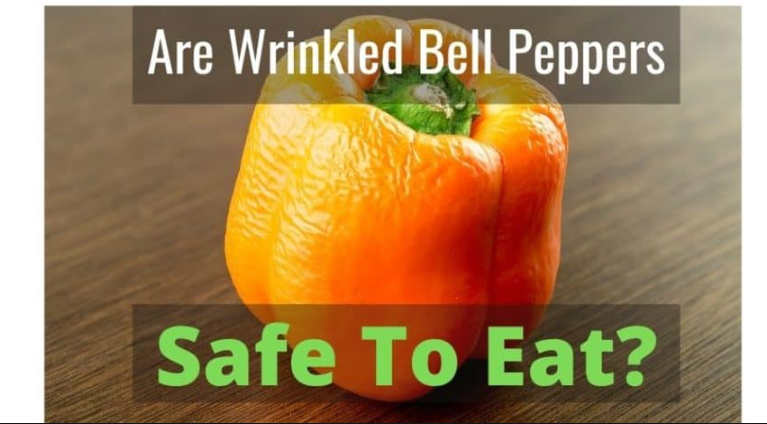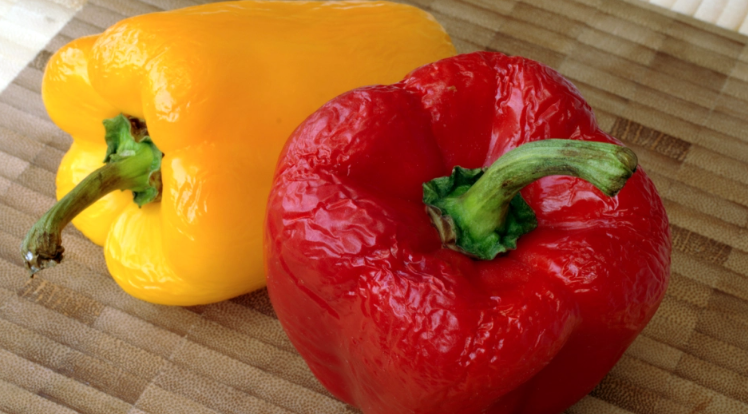Are Wrinkled Bell Peppers Bad? Understanding Their Quality and Taste
Bell peppers are a versatile and nutritious vegetable that adds flavor and color to many dishes. However, you may occasionally come across wrinkled bell peppers in your kitchen or at the grocery store. This raises the question: Are wrinkled bell peppers bad? In this article, we will explore the quality and taste of wrinkled bell peppers, providing insights to help you make an informed decision about using or discarding them.

Wrinkled bell peppers safe to eat?
1. The Appearance of Wrinkled Bell Peppers
Wrinkled bell peppers, as the name suggests, have a distinct texture characterized by creases, lines, and shriveled areas on their skin. This wrinkling can occur due to various factors, including age, storage conditions, and natural variations in the pepper's development.
2. Assessing the Quality of Wrinkled Bell Peppers
While the appearance of wrinkled bell peppers may be off-putting, it does not necessarily indicate spoilage or poor quality. The texture and taste of the pepper can provide a better indication of its overall condition.
3. Texture of Wrinkled Bell Peppers
When assessing the texture of wrinkled bell peppers, pay attention to the firmness and resilience of the flesh. While some wrinkling is normal as peppers age, excessively soft or mushy areas may indicate decay or spoilage.
4. Taste of Wrinkled Bell Peppers
Wrinkled bell peppers can still be edible and flavorful despite their appearance. The taste of a bell pepper is influenced by its ripeness and the natural sugars present in the vegetable. Wrinkled bell peppers may have a slightly more concentrated flavor, which can be desirable for certain recipes.
5. Cooking with Wrinkled Bell Peppers
If you come across wrinkled bell peppers, consider using them in cooked dishes rather than consuming them raw. Cooking can help soften the wrinkles and improve the texture while preserving the flavor and nutritional value of the pepper.
6. Factors Affecting Bell Pepper Wrinkling
Understanding the factors that contribute to bell pepper wrinkling can help you assess their quality. Age, improper storage conditions (such as exposure to heat or humidity), and physical damage can all accelerate the wrinkling process.
7. Proper Storage to Maintain Bell Pepper Quality
To maximize the shelf life and quality of bell peppers, it is important to store them properly. Keep bell peppers in a cool, dry place, such as the refrigerator's crisper drawer, and avoid storing them alongside fruits that emit ethylene gas, which can speed up the ripening process and promote wrinkling.
8. When to Discard Wrinkled Bell Peppers
While wrinkled bell peppers can still be safe to consume, there are instances when it is best to discard them. If the pepper exhibits signs of mold, extensive decay, foul odor, or sliminess, it is advisable to err on the side of caution and discard it.

Wrinkled bell peppers
In conclusion, wrinkled bell peppers are not necessarily bad or inedible. The wrinkling is typically a result of natural aging or storage conditions. Assessing the texture and taste of the pepper can help determine its quality, while cooking can help enhance the flavor and improve the texture of wrinkled bell peppers. By understanding the factors that contribute to bell pepper wrinkling and practicing proper storage techniques, you can maximize the freshness and quality of these versatile vegetables. Remember to trust your senses and use your judgment when deciding whether to use or discard wrinkled bell peppers in your culinary endeavors.